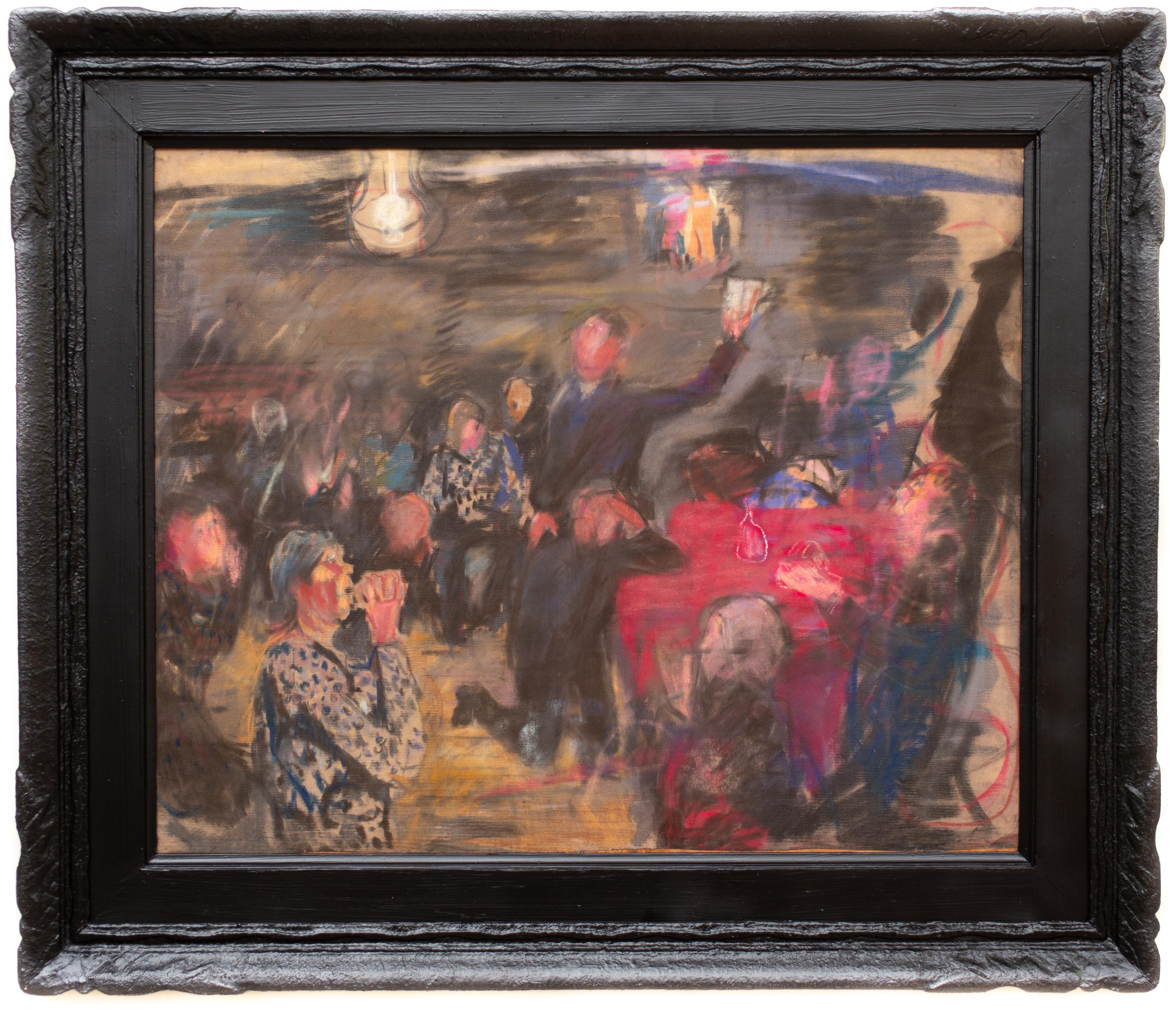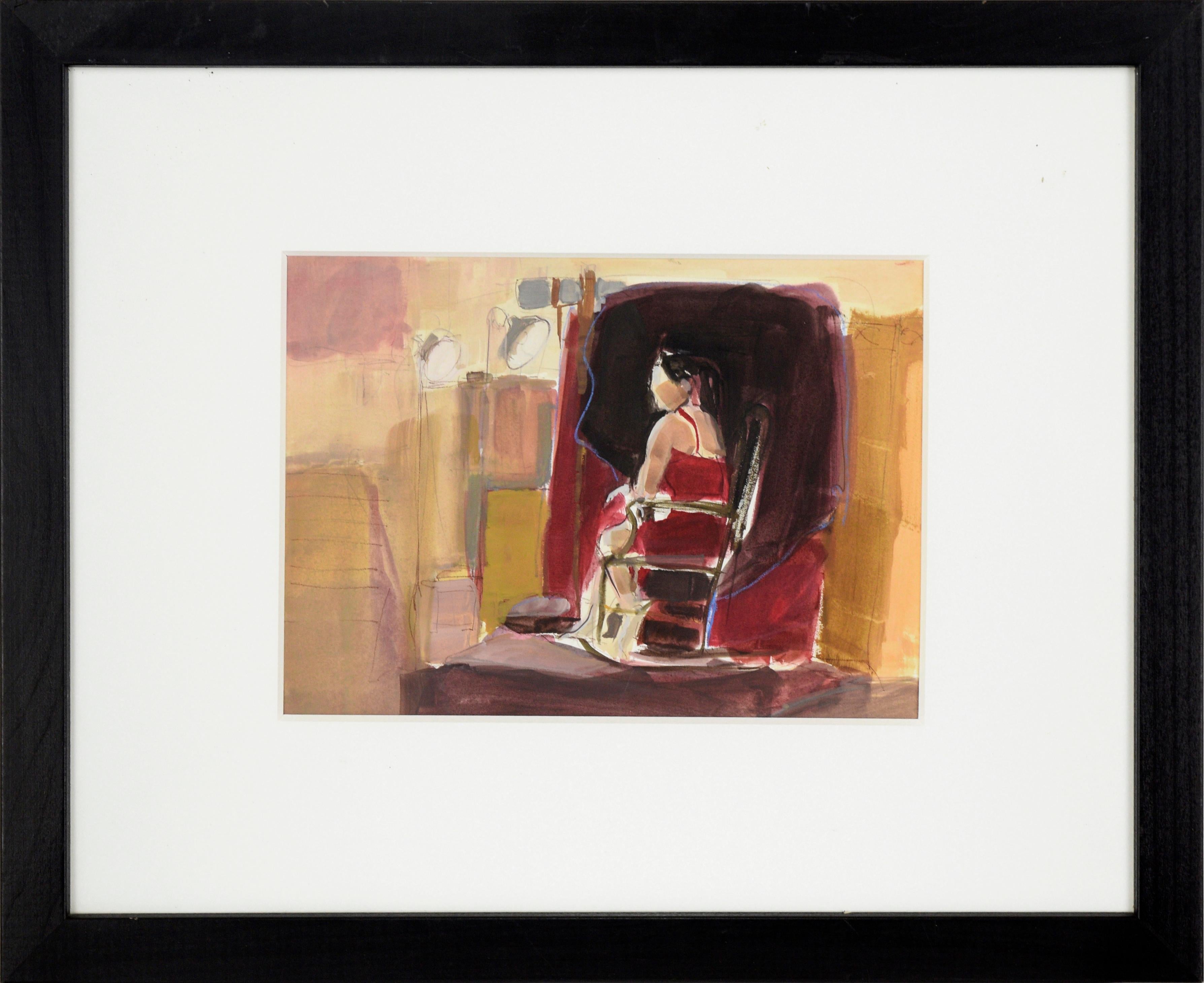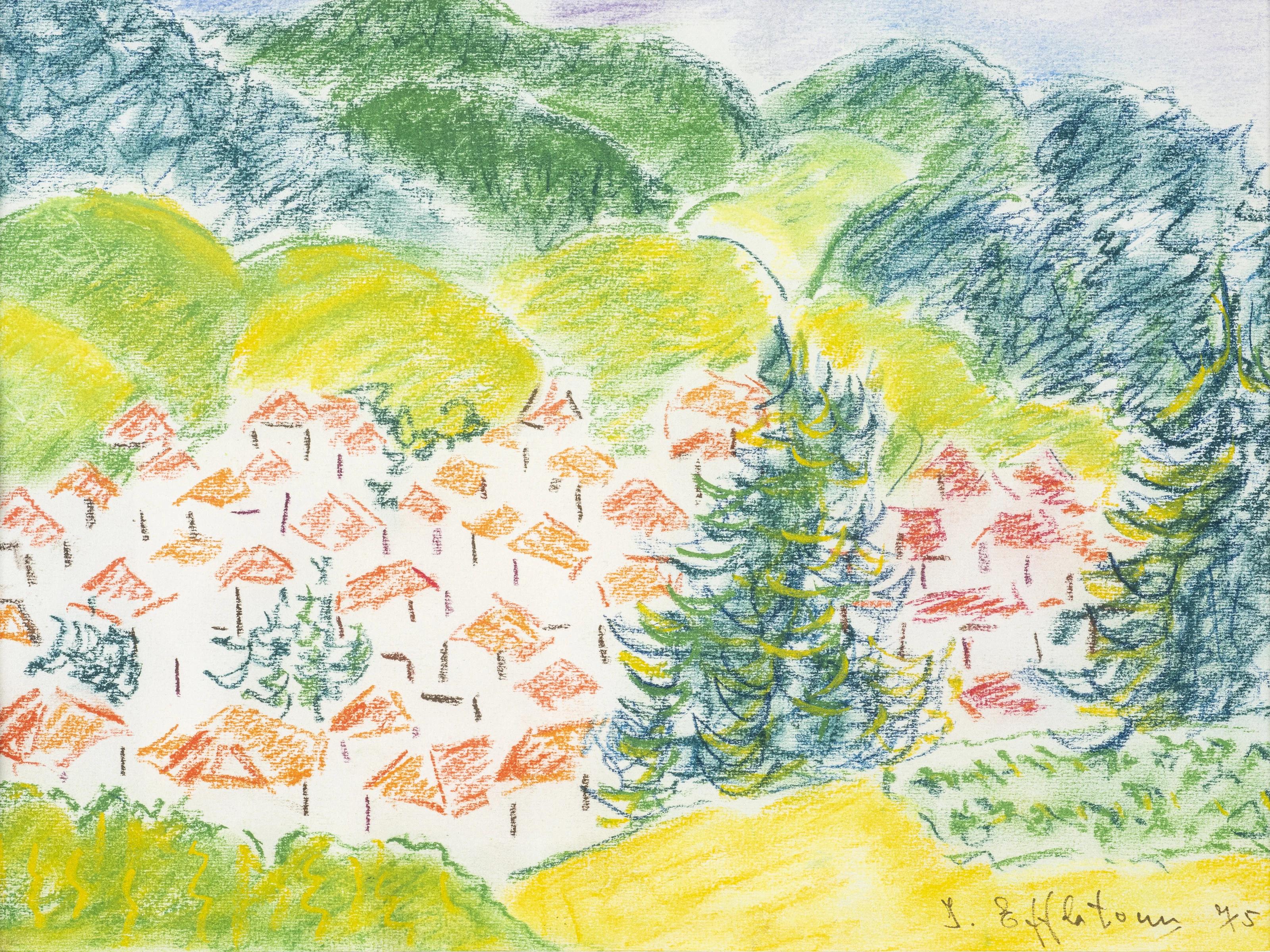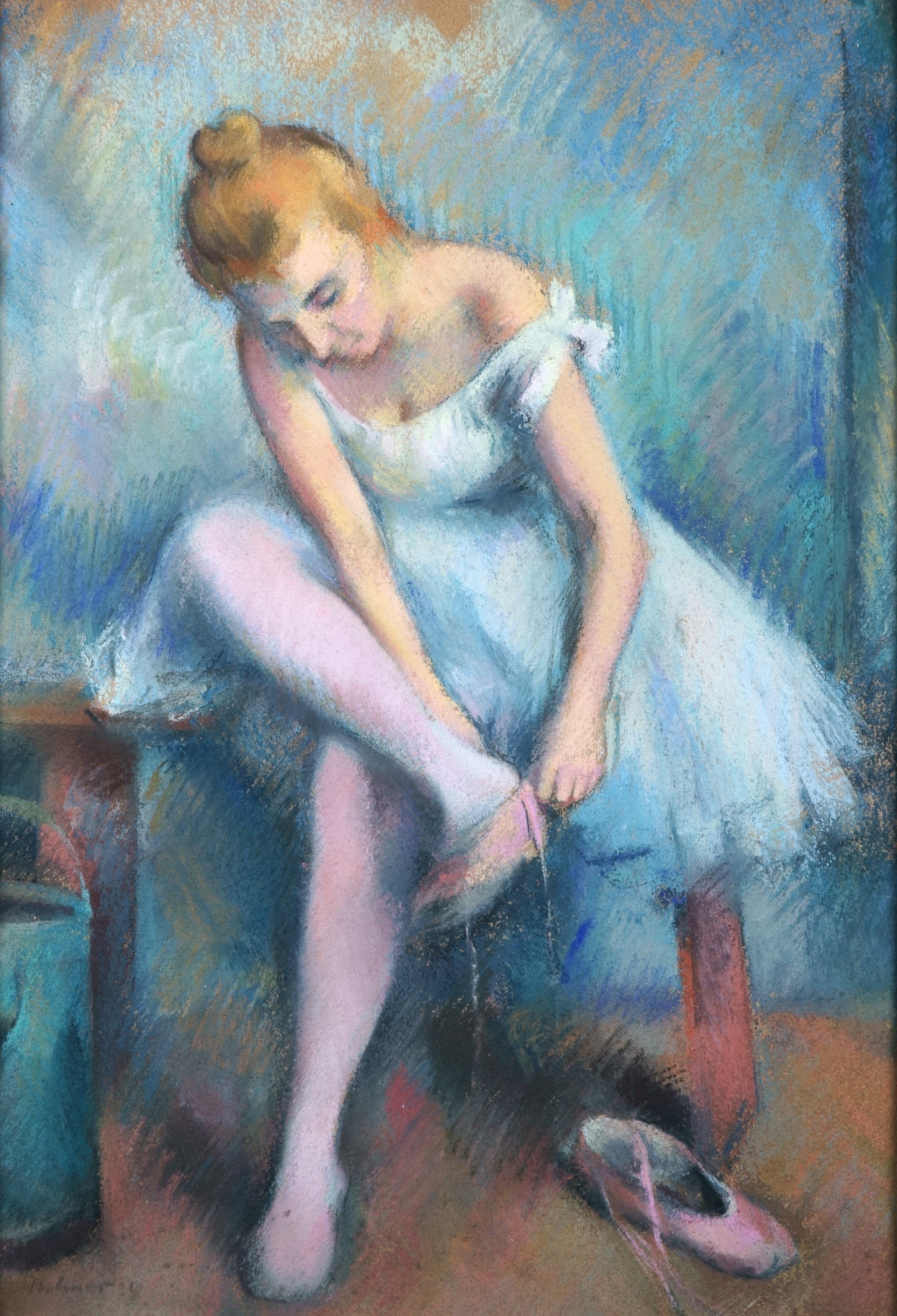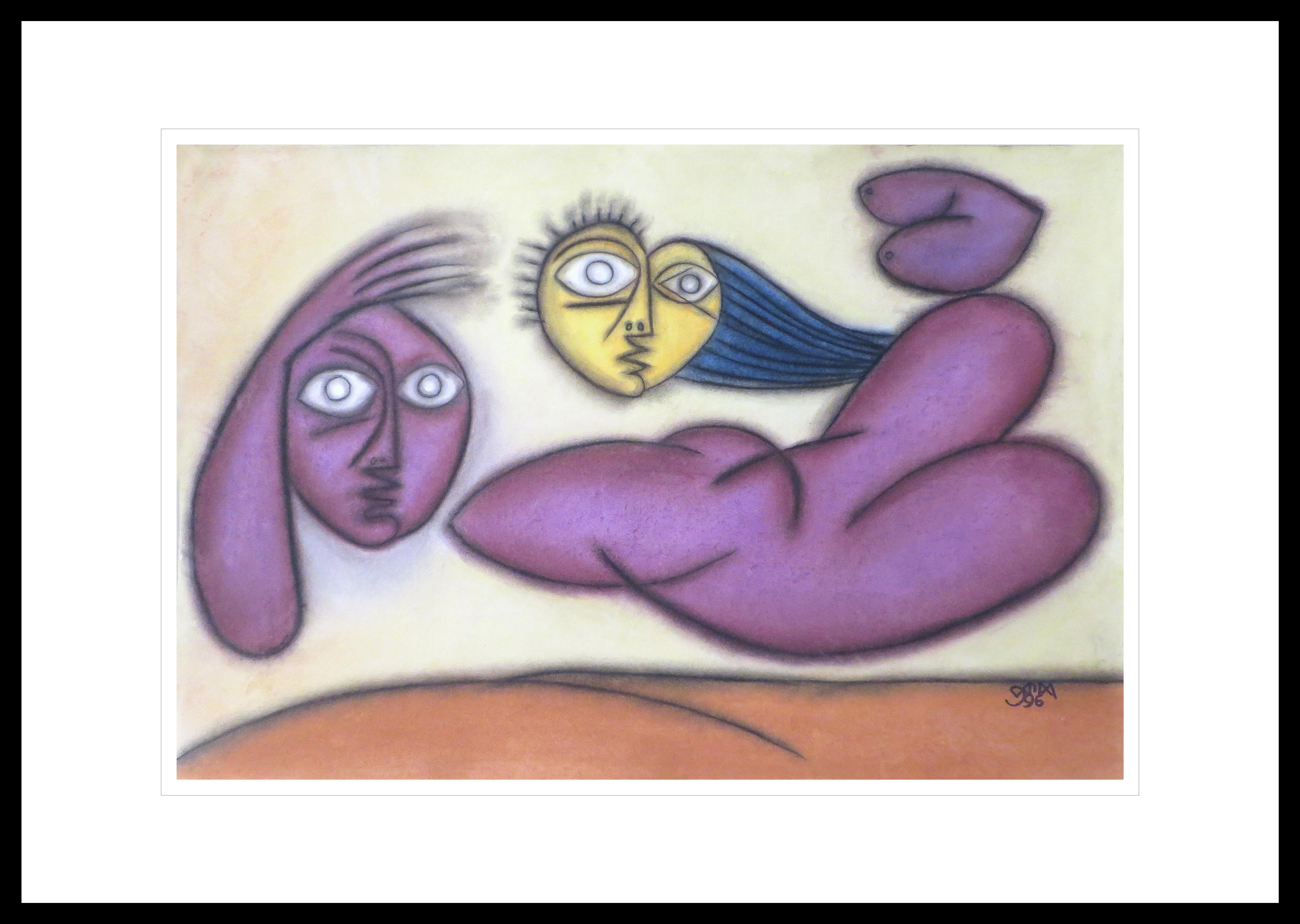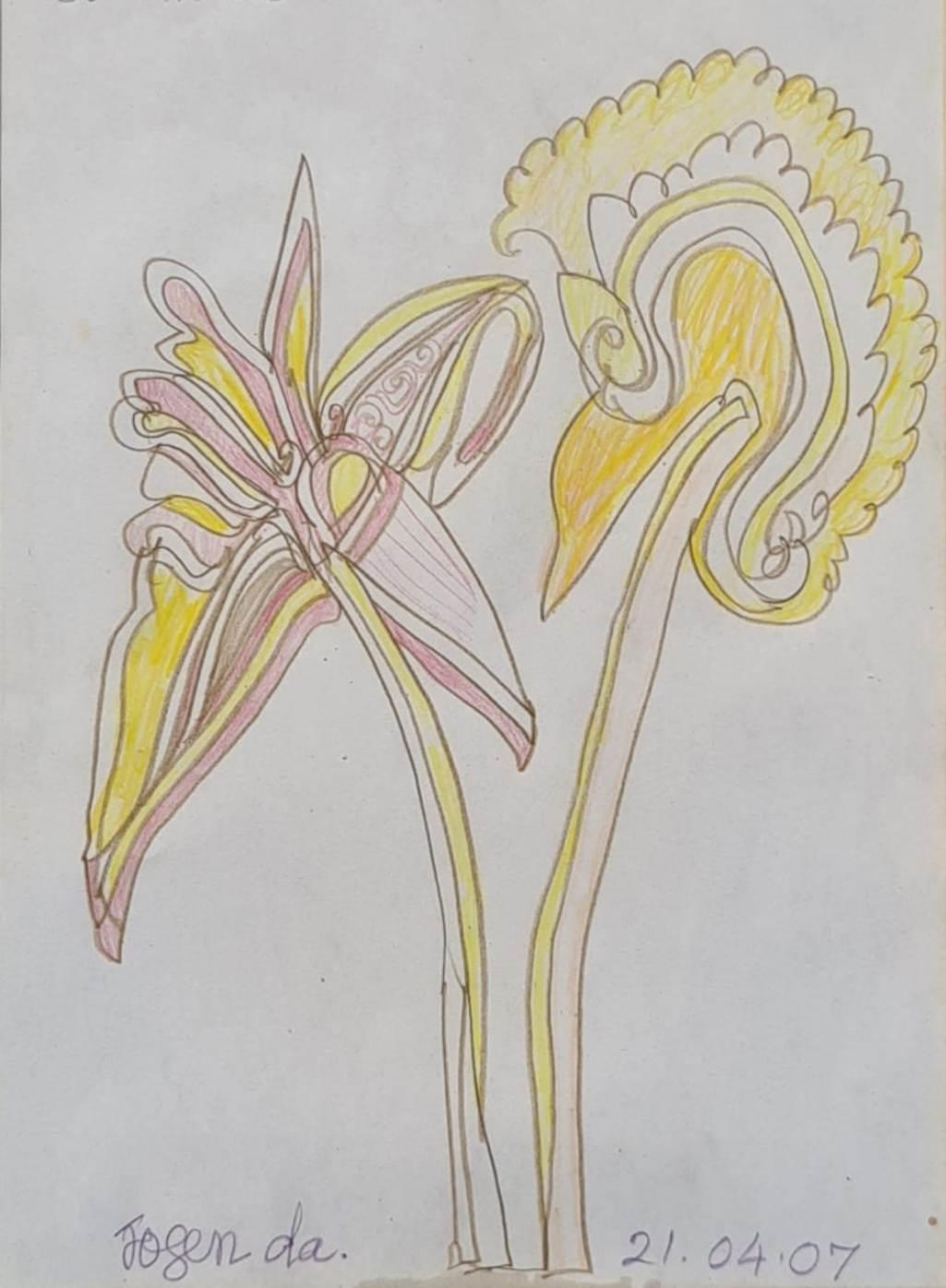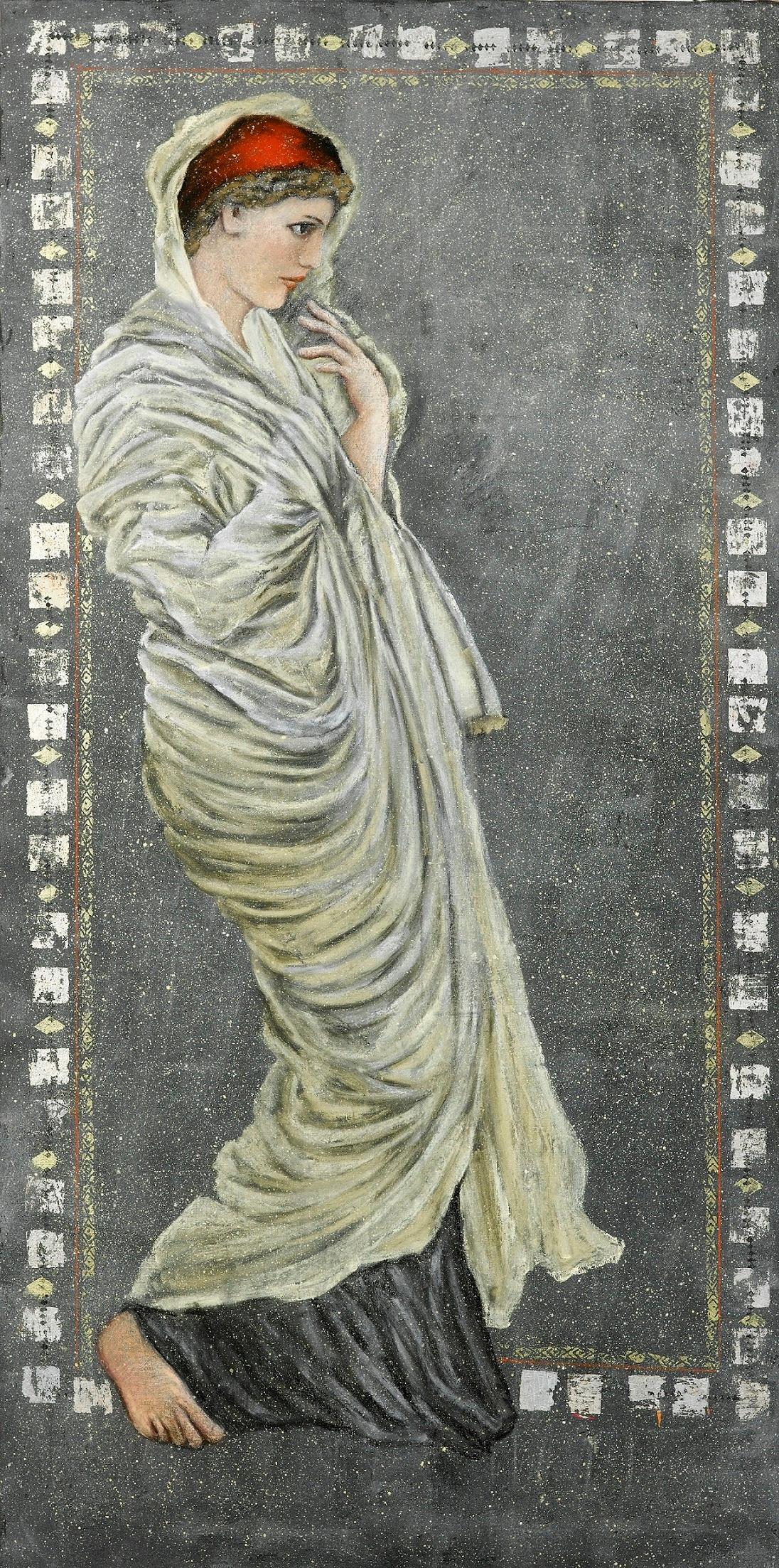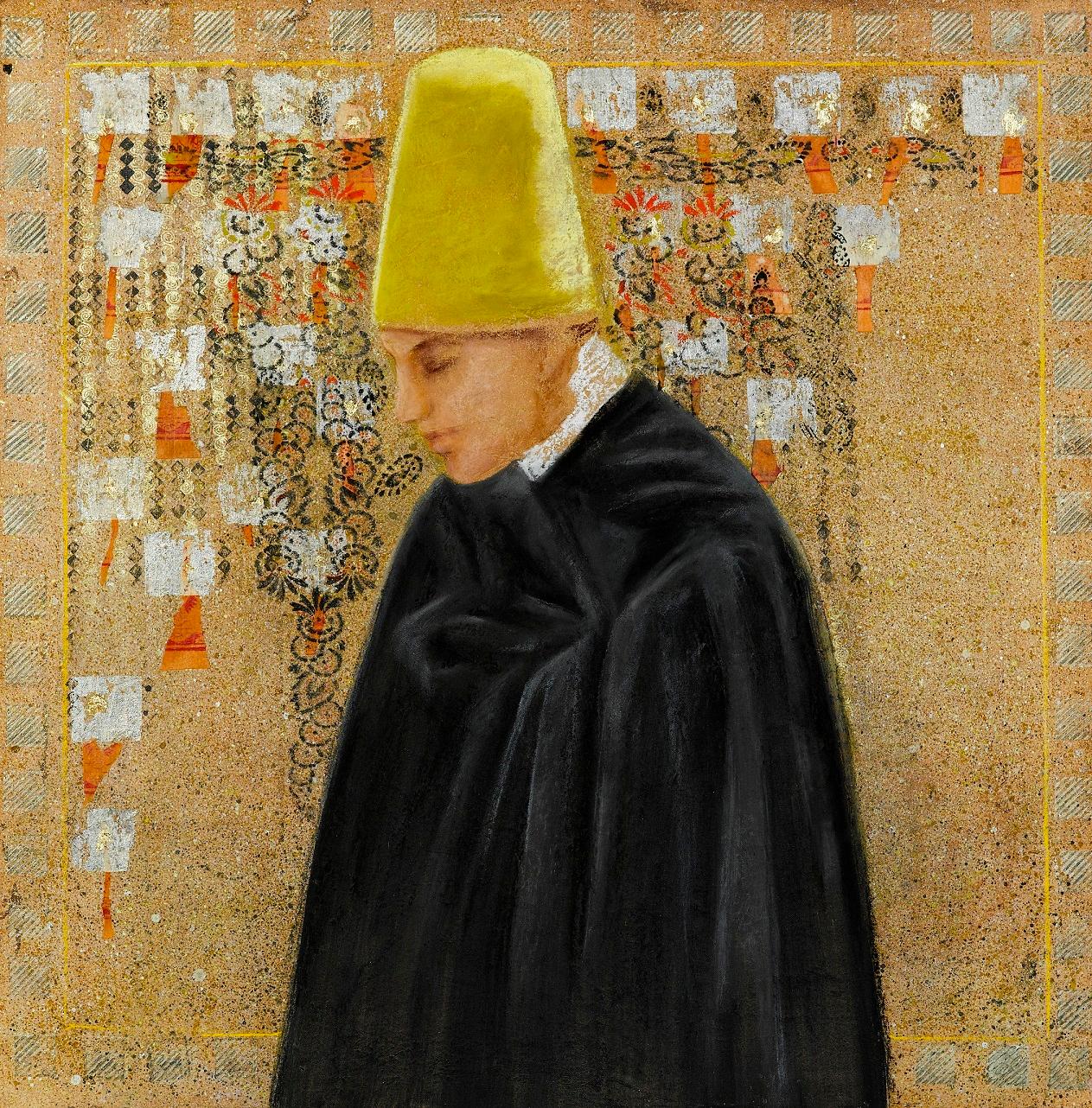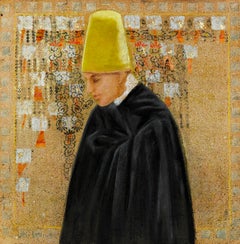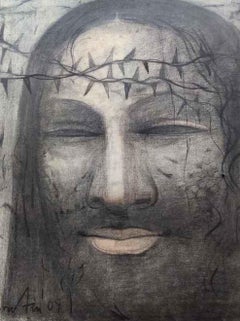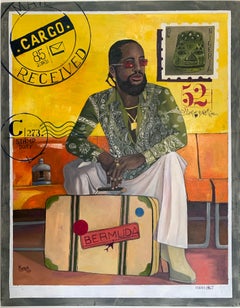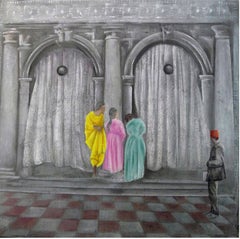
"Les 3 Graces” Painting in Glass Frame 47" x 47" in by Katherine Bakhoum Tisné
Want more images or videos?
Request additional images or videos from the seller
1 of 5
Katherine Bakhoum-Tisné"Les 3 Graces” Painting in Glass Frame 47" x 47" in by Katherine Bakhoum Tisné2018
2018
About the Item
- Creator:Katherine Bakhoum-Tisné (1949, Egyptian, French)
- Creation Year:2018
- Dimensions:Height: 47 in (119.38 cm)Width: 47 in (119.38 cm)Depth: 1 in (2.54 cm)
- Medium:
- Movement & Style:
- Period:
- Condition:
- Gallery Location:Culver City, CA
- Reference Number:1stDibs: LU108515961712
About the Seller
4.7
Gold Seller
These expertly vetted sellers are highly rated and consistently exceed customer expectations.
Established in 2016
1stDibs seller since 2018
351 sales on 1stDibs
Typical response time: 1 hour
More From This SellerView All
- "Alpine Village II" Pastel Painting 9" x 12" in (1975) by Inji EfflatounBy Inji EfflatounLocated in Culver City, CA"Alpine Village II" Pastel Painting 9" x 12" in (1975) by Inji Efflatoun signed & dated Inji Eflatoun pursued free studies in art. Since 1942, she has participated in the exhibitio...Category
20th Century Post-War Figurative Paintings
MaterialsArchival Paper, Pastel
- "Derviche II” Painting in Glass Frame 31" x 31" inch by Katherine Bakhoum TisnéBy Katherine Bakhoum-TisnéLocated in Culver City, CA"Derviche II” Painting in Glass Frame 31" x 31" inch by Katherine Bakhoum Tisné Katherine Bakhoum represents art that has been forgotten for a long while. She draws upon the concept...Category
21st Century and Contemporary Contemporary Figurative Paintings
MaterialsGlass, Mixed Media
- “la Belle au Drapé Jaune” Painting 51"x38"in by Katherine Bakhoum TisnéBy Katherine Bakhoum-TisnéLocated in Culver City, CA“la Belle au Drapé Jaune” Painting 51"x38"in by Katherine Bakhoum Tisné Mixed Media with Glass Frame Katherine Bakhoum represents art that has been forgotten for a long while. Sh...Category
21st Century and Contemporary Contemporary Figurative Paintings
MaterialsGlass, Mixed Media
- "EVOCAZIONE" mixed media painting by Emanuele TozzoliBy Emanuele TozzoliLocated in Culver City, CAEmanuele Tozzoli "EVOCAZIONE" Mixed media on board 45" x 27" inch 114 x 69 cm ABOUT THE ARTIST Born in Italy in 1989, Emanuele discovered paint...Category
21st Century and Contemporary Neo-Expressionist Figurative Paintings
MaterialsMixed Media, Board
- "Red Drapery” Oil Painting 53" x 27.5" inch by Katherine Bakhoum TisnéBy Katherine Bakhoum-TisnéLocated in Culver City, CA"Red Drapery” Oil Painting 53" x 27.5" inch by Katherine Bakhoum Tisné Katherine Bakhoum represents art that has been forgotten for a long while. She draws upon the concept and the ...Category
21st Century and Contemporary Contemporary Figurative Paintings
MaterialsCanvas, Oil
- "Three Graces” Oil Painting 47" x 47" inch by Katherine Bakhoum TisnéBy Katherine Bakhoum-TisnéLocated in Culver City, CA"Three Graces” Oil Painting 47" x 47" inch by Katherine Bakhoum Tisné Katherine Bakhoum represents art that has been forgotten for a long wh...Category
21st Century and Contemporary Contemporary Figurative Paintings
MaterialsCanvas, Oil
You May Also Like
- Christ, Charcoal & Pastel on Canvas, Black by Contemporary Artist "In Stock"By Bratin KhanLocated in Kolkata, West BengalBratin Khan - Christ Charcoal & Pastel on Canvas, 30 x 24 inches, 2009 The anecdotes and narratives of Krishna's life are generally titled as Krishna Leela. He is a central character in the Mahabharata, the Bhagavata Purana and the Bhagavad Gita, and is mentioned in many Hindu philosophical, theological, and mythological texts. They portray him in various perspectives: a god-child, a prankster, a model lover, a divine hero, and as the universal supreme being. His iconography reflects these legends, and shows him in different stages of his life, such as an infant eating butter, a young boy playing a flute, a young man with Radha or surrounded by women devotees, or a friendly charioteer giving counsel to Arjuna. He is sometimes accompanied by cows or a calf, which symbolise the divine herdsman Govinda. Alternatively, he is shown as a romantic and seductive man with the gopis (milkmaids), often making music or playing pranks. Style : Marked for the refined handling of line work and palette, his painterly compositions, reflect influences of folk art and Bengal School. The renderings are poetic and the narratives mythical, folklore-inspired or religious. His curvaceous and languid figures, often accompanied by a surrounding halo, are set amidst a natural habitat. The imagery features Buddha, Krishna, other legendry icons as well as pretty damsels and lotus flowers. Figures dominate the whole thinking process of his paintings with different subjects such as mermaids, musicians (Classical Musicians , Rajasthani Folk Singers and Baul Singers) and mythological figures appearing in his works. He was deeply influenced by the life Sri Aurobindo and thus enlightened beings. Such as Buddha, Jesus and Krishna are also a recurring theme in his Golden Man series. His focus on detail and remarkable skill over the line make his style unique. He uses a traditional method of tempera painting which goes back to the Indian miniature though the material he uses is totally contemporary. Knowledge of the wash technique further enables him to create a soft, twilight effect in his paintings. About the Artist and his work : Born : 1969, West Bengal. Education : 1993 Bachelor of Fine Arts (Painting), Visva Bharati University, Santiniketan. Selected Solo Exhibitions : 2000 - Classic Source, Mumbai. 1999 - Rightlines Art Gallery, Bangalore. 1993 - Grindlays Bank Gallery, Kolkata. Selected Group Exhibitions : 2007 - ‘A Brush with Durga’ ,Gallery Kolkata, Kolkata. 2002 - 'Gems of Bengal Art...Category
2010s Contemporary Figurative Paintings
MaterialsCharcoal, Pastel, Mixed Media, Canvas
- SojournerLocated in Ibadan, Oyo"Sojourner" by Morakinyo Femi is a captivating artwork that presents a young man seated in a fashionable attire, adorned with striking jewelry and sport...Category
1970s Contemporary Figurative Paintings
MaterialsOil, Pastel, Canvas, Acrylic
- Spanish dancers pastel drawingLocated in Barcelona, BarcelonaPierre Carro (1952) - Spanish Dancers - Pastel Drawing measurements 45x34 cm. Frame measurements 93x79 cm.Category
1980s Post-Impressionist Figurative Paintings
MaterialsPastel
$652 Sale Price25% Off - Party Time by Swedish Artist Eric Hallström, Pastel on PaperLocated in Stockholm, SEEric Hallström (1893-1946) Swedish Party Time pastel on paper signed Eric Hallström image dimensions approx 19.29 x 23.22 inches (49 x 59 cm) frame 26.37 x 30.70 inches (67 x 78 cm...Category
1920s Figurative Paintings
MaterialsPastel, Paper
$2,472 Sale Price35% Off - Model in the Studio - Figurative in Gouache and Pastel on PaperLocated in Soquel, CAEvocative figurative painting of a woman seated in a studio by an unknown artist (20th Century). A woman dressed in red is sitting in a chair atop a platform. There are studio lights...Category
Early 2000s American Impressionist Figurative Paintings
MaterialsPaper, Pastel, Gouache
$340 Sale Price20% Off - Ballerina in the dressing roomLocated in Berlin, DEKarl Stohner (1894 Mannheim - 1957 Paris), Ballerina in the dressing room, 1924. Pastel on painting cardboard, 65 x 45 cm, 77,5 x 59,5 (frame), signed lower left "Stohner" and dated "[19]24". Behind glass in gold stucco frame of the time. - Painting cardboard slightly warped, in the lower area minimally stained, frame with age patina and traces of abrasion. - The Naturalness of Artificiality - We see a ballerina putting on her right ballet shoe while the left one is still lying on the floor in front of her. It is precisely the casualness of the scene that gives it its intimacy: the blonde young woman is completely absorbed in the activity of getting ready for the dance, oblivious to us, while we are positioned right in front of her in the dressing room, inaccessible to the audience, watching her dress. Even though she does not yet perform a dance step, there is a graceful elegance in the action shown that seems quite natural in contrast to the rehearsed art form of dance. The young woman is not presenting herself to an audience in a perfectly formed movement, but is performing an everyday action, unaware that she is being watched. Concentrated, almost devotional, she pulls the ballet slipper over the verses, not noticing that one of the straps of the tutu has slipped off her shoulder, reinforcing the erotic moment of the scene. Inspired by Edgar Degas, Karl Stohner has painted the scene in strong pastel tones. The dominant blues and turquoises give the scene a magical, mysterious quality and, like the pink of the stockings and ballet slippers, are borrowed from Degas's dancers. Degas's colors, however, are cooler tempered, which is particularly evident in the light impasto applied incarnate. This is where the vividness of Auguste Renoir comes into play, making the dancer seem entirely flesh and blood. Karl Stohner, who has studied the pastels of Degas and Renoir intensively, combines the two artists here to create his own pictorial language. He has laid out the background in broad layers of strokes, ranging in color from white to turquoise to dark blue. The result is a dynamic, pattern-like structure that contrasts with the woman's calm, inward-looking posture. The fund anticipates the dynamics of the choreography of the dance for which the ballerina is preparing. At the same time, the broad pastel line in the background is an adequate means of painting to depict the soft, flowing elegance of the dancer. About the artist Against the wishes of his wealthy parents, Karl Stohner decided to become a painter. His talent was discovered by the director of the Mannheim Art Gallery, Fritz Wichert, who supported him from then on, including financing study trips to Paris. There he discovered the art of Degas, Cézanne and Renoir, which inspired his work. GERMAN VERSION Karl Stohner (1894 Mannheim - 1957 Paris), Ballerina im Ankleideraum, 1924. Pastell auf Malkarton, 65 x 45 cm, 77,5 x 59,5 (Rahmen), unten links mit „Stohner“ signiert und auf „[19]24“ datiert. Hinter Glas im Goldstuckrahmen der Zeit. - Malkarton leicht verzogen, im unteren Bereich minimal fleckig, Rahmen mit Alterspatina und Abriebspuren - Die Natürlichkeit der Kunstform - Wir sehen eine Ballerina, die sich den rechten Ballettschuh anzieht, während der linke noch vor ihr auf dem Boden liegt. Gerade aus der Beiläufigkeit der Szenerie speist sich ihre Intimität: Die blonde...Category
1920s Post-Impressionist Figurative Paintings
MaterialsPastel
$1,565 Sale Price20% Off
Recently Viewed
View AllMore Ways To Browse
Painting Oriental Woman Cigarette
Coach Oil Painting
Curry And Paxton
Isaac Sel
Nancy Schon
Winston Will Be Rain
Zhiwei Tu
1960 Christmas Elfs
30s Gym
Abdulateef Salaudeen
African Girl In Pineapple
Alessi Premio
Amalia Ludwig
Ana M Gold 14
Andrew Kiss Paintings
Angelica Meerson
Anna Oleynik
Antique Oil On Canvas Shakespearean


